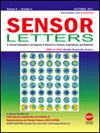基于多光谱的原料奶样品质量参数测量传感系统
引用次数: 0
摘要
乳量计用于监测各个乳品中心的牛奶质量,但这可能导致不正确的结果,因为它需要人工干预和精确的温度校正,而且整个过程很耗时。本研究提出了基于多光谱的光谱方法,并对不同的化学计量学和基于人工神经网络(ANN)的技术进行了比较研究,以测量不同的牛奶品质参数。在340 ~ 1030nm的波长范围内,利用现成的组件设计了一个多光谱光谱传感模块,并与基于8位微控制器的嵌入式系统进一步接口,产生+90度和-90度三种不同的透射率和散射光谱。对从斋浦尔散装牛奶冷却中心(BMC)收集的150份牛奶样本(奶牛、水牛和混合牛奶)进行了数据采集过程。利用主成分回归(PCR)、多元线性回归(MLR)和偏最小二乘回归(PLSR)等统计建模技术建立了提取特征与目标奶参数之间的相关模型。根据预测模型的准确性对实现的技术进行了比较,并观察到与其他两种技术相比,PLSR显示出更好的结果。为了提高结果的准确性,还探索了基于人工神经网络的建模方法。五种不同的基于人工神经网络(ANN)的建模技术(LevenbergMarquardt、贝叶斯调节、缩放共轭梯度、梯度下降和弹性)被用于预测目标牛奶质量参数。其中,梯度下降建模技术对牛奶脂肪含量的预测效果较好(R2 = 0.96198),贝叶斯调节对乳糖含量的预测效果较好(R2 = 0.90594),其他(固体非脂肪(SNF)、蛋白质)的预测效果较好(缩放共轭梯度对SNF的预测R2 = 0.76077, Levenberg Marquardt对蛋白质的预测R2 = 0.41935)。所产生的结果用安装在斋浦尔拉贾斯坦乳制品联合会公司(RCDF)的MilkoScan FT1系统进行了验证,并观察到结果呈现出上述更高级别的决定系数(蛋白质,S.N.F.除外)。基于智能手机的android应用程序也被开发出来,通过蓝牙协议从嵌入式系统获取数据,并将位置信息传输到云端进行进一步分析。本文章由计算机程序翻译,如有差异,请以英文原文为准。
A Multispectral Spectroscopic Based Sensing System for Quality Parameters Measurement in Raw Milk Samples
Lactometer is used to monitor milk quality at various dairy centers but this may lead towards incorrect results because it requires human intervention and exact temperature correction as well as overall process is time-consuming. Presented work proposes the multispectral based spectroscopic
approach along with the comparative study of different chemometric and artificial neural network (ANN) based techniques to measure different milk quality parameters. A multispectral spectroscopic sensing module has been designed using off the shelf components and further interfaced with 8-bit
microcontroller based embedded system to produce three different spectrums of transmittance and scattering at +90 degree and –90 degree over the wavelength range of 340–1030 nm. Data acquisition process has been performed for 150 milk samples (cow, buffalo, and mix) collected from
the bulk milk cooling center (BMC), Jaipur. Different statistical modeling techniques such as principle component regression (PCR), multiple linear regression (MLR) and partial least square regression (PLSR) have been implemented to develop correlation models between extracted features and
target milk parameters. Implemented techniques have been compared based on the accuracy of their prediction models and it has been observed that PLSR shows better results compared to other two techniques. ANN-based modeling approach also has been explored to improve the accuracy of results.
Five different artificial neural networks (ANN) based modeling techniques (LevenbergMarquardt, Bayesian regulation, scaled conjugate gradient, gradient descent and resilient) have been used to predict targeted milk quality parameters. Out of them, Gradient descent modeling technique performs
better to predict fat content of the milk (R2 = 0.96198), Bayesian regulation performs better to predict lactose content (R2 = 0.90594) and others (solid non-fat (SNF), protein) are just satisfactory (R2 = 0.76077 for SNF using scaled conjugate
gradient, R2 = 0.41935 for protein using Levenberg Marquardt). Produced results are validated with the MilkoScan FT1 system installed at Rajasthan Corporation of Dairy Federation (RCDF), Jaipur and it has been observed that results presented higher order of coefficient of
determination as mentioned above (except protein, S.N.F.). A smartphone-based android application also has been developed to acquire data from the embedded system using Bluetooth protocol and transfer to cloud with the location information for further analysis.
求助全文
通过发布文献求助,成功后即可免费获取论文全文。
去求助
来源期刊

Sensor Letters
工程技术-电化学
自引率
0.00%
发文量
0
审稿时长
6 months
期刊介绍:
The growing interest and activity in the field of sensor technologies requires a forum for rapid dissemination of important results: Sensor Letters is that forum. Sensor Letters offers scientists, engineers and medical experts timely, peer-reviewed research on sensor science and technology of the highest quality. Sensor Letters publish original rapid communications, full papers and timely state-of-the-art reviews encompassing the fundamental and applied research on sensor science and technology in all fields of science, engineering, and medicine. Highest priority will be given to short communications reporting important new scientific and technological findings.
 求助内容:
求助内容: 应助结果提醒方式:
应助结果提醒方式:


